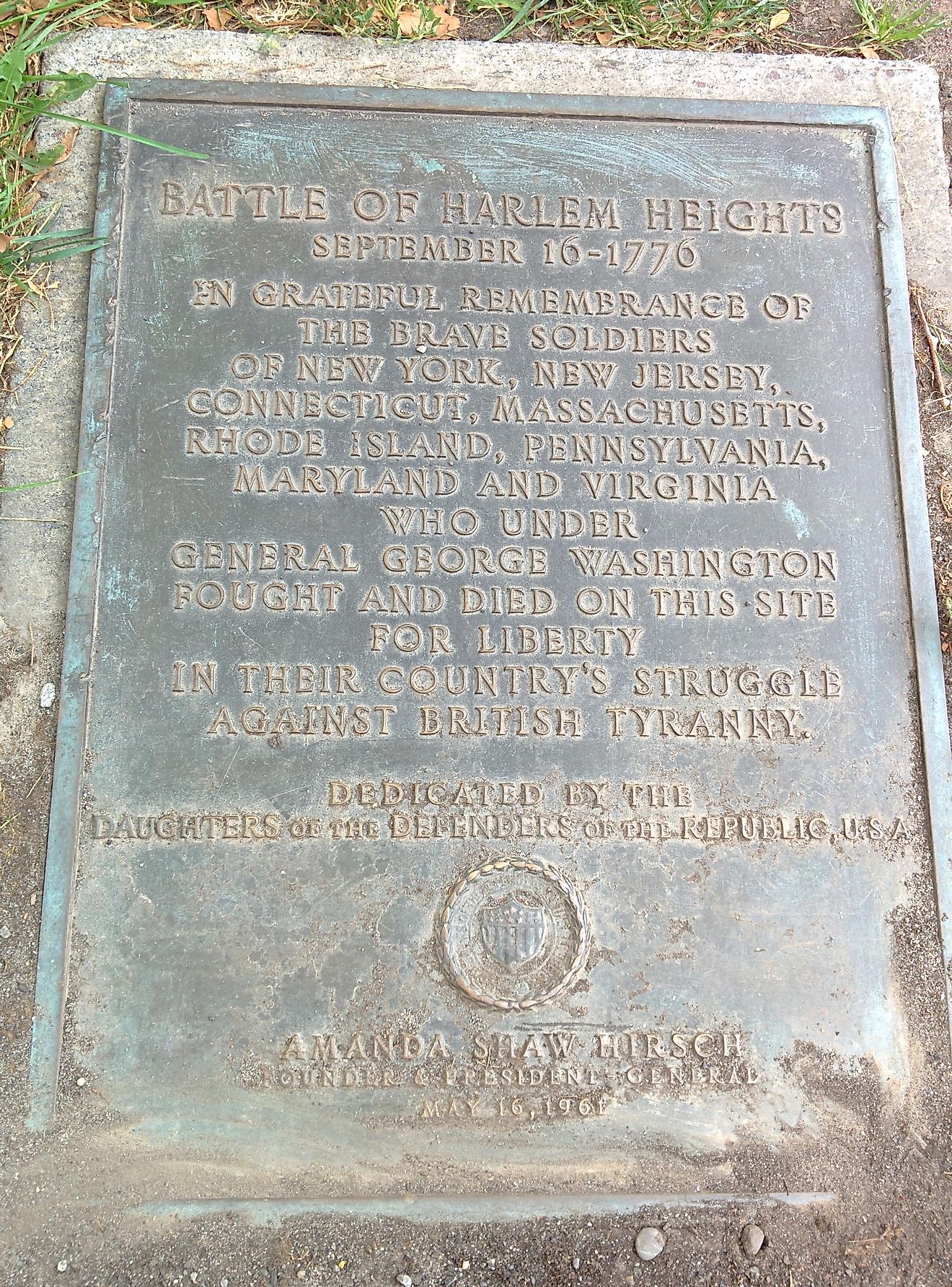The Battle of Harlem Heights: The American Revolutionary War

5. Background
The Battle of Harlem Heights was fought on September 16th, 1776 during the American Revolutionary War (175-1783) in what is now the Morningside Heights community on Manhattan Island in New York City. The then-General George Washington had been defeated at the Battle of Long Island and he was withdrawing to Harlem Heights to avoid the pursuit of General Sir William Howe and his colleague Alexander Leslie. The Battle was between the American forces and the British forces which had combined forces with the Germans under General Howe. Washington organized his continental army to respond to any attack from Sir Howe and his army of about 4,000 men, who had landed at Kip’s bay area of Manhattan the previous day. On September 16th, 1776, General Washington sent a group of 150 rangers led by Lieutenant Thomas Knowlton and General Joseph Reed to investigate the whereabouts of the British army, and possibly engage them in combat.
4. Makeup
George Washington, intelligence and light infantry “Ranger” officer Thomas Knowlton, and Major General Nathanael Greene led the outnumbered Continentals against a British force which numbered around 5,000 strong after the arrival of reinforcements. The British were commanded by William Howe and Alexander Leslie. Despite the presence of ships and larger guns in and around Manhattan Harbor, the battle more or less was fought by infantry and light infantry riflemen.
3. Description
The Battle of Harlem Heights took place on a hilly terrain, wherein the combatants continually fought to take high ground from each other. As Knowlton and his men were engaging the British soldiers in a frontal assault, Knowlton sent a second group of about 1,000 patriots to attack the enemies. The Americans had gotten enraged at the British army’s mockery of them, such as using fox hunting calls and playing “Gone Away”, a tune sounded when a fox had been killed and a hunt was over. The new combatants split into three companies of Virginia Continentals, in addition to the specialized “Rangers” under Knowlton, and worked their way towards the British along their southern, right-side flanks. They had been ordered to open fire on the British once they were directly behind them. Something went wrong with the plan, and the American forces turned west too early, thereby attacking the British from a disadvantaged position, and this compromised their tactics. In spite of the mishaps, the American forces managed to force the British into a retreat away from their positions in the north of the area. The American forces pushed the British army out of a field and to the top of a hill. Upon reaching the hill, the American forces received reinforcements in the form of rifles and other armaments. Having acquired significant ground in their pursuit, the Americans forced the British to retreat into a nearby field of buckwheat.
2. Outcome
The battle resulted in the deaths of approximately 70 British soldiers and approximately 30 American ones, including the loss of Lieutenant Knowlton. Approximately 100 American soldiers and 390 British were wounded in the battle. Despite the Continentals claiming victory, British reinforcements stopped the American pursuit of the British, and ultimately forced their hands at assuming vulnerable positions in Pennsylvania after later defeats in the New York and New Jersey campaigns.
1. Significance
Although General Washington was not fully satisfied with the manner in which the battle had ended, he was happy that he had won his first ever battlefield victory in the war. The soldiers were also elated that they had instilled significant fear in a formidable British force. The victory was significant because Virginia militias, which had been forced to flee by the British forces in a battle the previous day, managed to fight alongside the Northern Rangers and retaliated against the British. The victory of American forces in the battle helped to restore public confidence in the Continental Army. It also lifted the morale of the soldiers themselves and helped them to continue the subsequent battles that arose during the American Revolutionary War. Nonetheless, the death of Knowlton and the disrupted movements of the Continental Army subsequent to the battle shook Washington’s forces to the core, and took months to recover from. The site of the battle is near Columbia University today.











